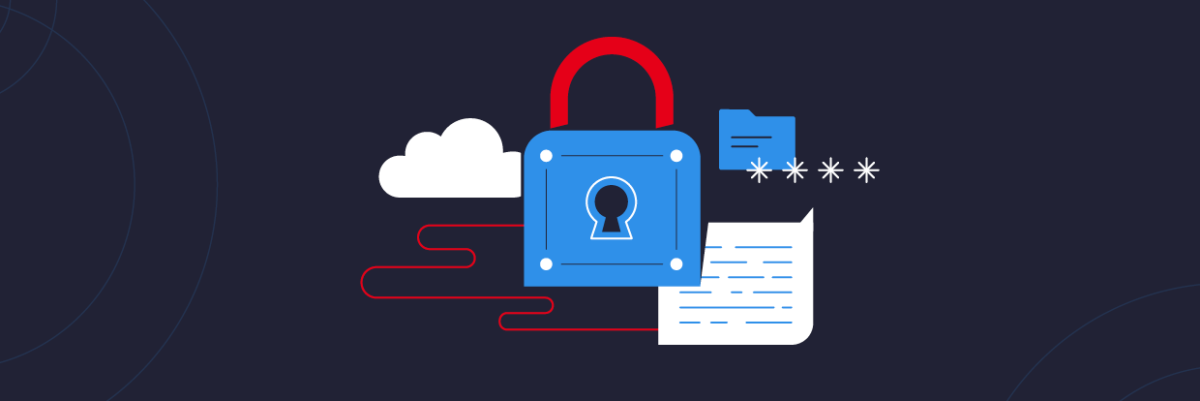The digital age is here to stay. With the increasing use of mobile apps and other digital technology, e-learning has become more popular. With so many people now accessing online resources, it’s important that every user has a secure experience when using these resources. The rapid growth of the digital world means we are seeing more cyberattacks than ever before which is why Data Security in EdTech is so important. Children are often the victims of these attacks because they generally have little understanding of how to keep their information safe from hackers.
They also tend to share things with family and friends without thinking about what might happen if those people access personal information that should only be viewed by them. As a result, sensitive data is leaking from institutions at an accelerating pace. This makes it even more important for organizations in the education sector to implement security measures and improve Data Security in EdTech.
What is Data Security in EdTech?
Data security is the practice of protecting information from being accessed, modified, or deleted by others. When you protect this information, others cannot read, write to, or delete it either, which is what you want them to be able to do. It is a must for organizations to implement strong security measures for their data and applications.

The data you store and share with others is valuable and important. It can include information like personal statistics, test results, grades, research, etc. If your data is not protected, it could be accessed by hackers or other individuals, who may then change or delete it. This could severely damage your reputation, lead to loss of revenue, or even result in the loss of your job. Therefore, it is important that you take steps to protect your data security.
How to Protect Data from Hackers?
There are many ways to protect your data. Some are easier than others, but they all offer protection for your data. Identify what information is being stored on the server and make sure it is secure. Encrypting the data means that it is coded in a way that makes it unreadable without the key. Hashing is another way to encrypt data. The key is used to unlock the data so that only the intended recipient can view it. The data should be locked with a password as well. A strong combination of these two methods makes it almost impossible for hackers to gain access to your information.
Make sure your server is secure. Lock your computer if it is left unattended. Enable a security software that scans for viruses. Install updates to keep your computer updated. Use a computer that is not used for work. Keep your computer software up-to-date to avoid any security vulnerabilities. Turn off your computer when not in use. Avoid sharing data that could be used by others. For example, do not upload test results or grades online. Use a private application that only has access to the information you want to share. Make sure your application has security measures in place.
Why is Data Security Important for Ed Tech Organisations?
Data security is important for a number of reasons, the most important of which is the protection of your data. Not only can hackers break into your server and steal your data, but they can also misuse the information they find. If a hacker gains access to your server, they could access a variety of information, including customer records, financial information, and intellectual property. Not only is this illegal, but it can also lead to lawsuits. This is why it is important for ed tech organisations to implement strong data security measures. It is even more important for those in the education sector.

This is because not only do you have valuable data like test scores and grades, but you also have a large number of students that view these resources. These students rely on this data to determine their grades, which means they want it to be protected. It is also important for these organisations because the growth of digital resources has led to an increase in cyberattacks. If you are an organisation that uses digital resources, you want to make sure your data is safe.
Steps for Implementing Data Security in Ed Tech
If you want to protect your data, you need to understand the different kinds of threats your resources may encounter. As with any other digital resource, your data is at risk of being hacked. A hacker could access your server, change data, or delete information. They could also use the information to impersonate someone else, which is an especially dangerous practice if done with user credentials. Essentially, if your data is exposed, it is at risk of being hacked. To protect your data, you need to implement several steps.

These include using a security solution that monitors trends in your data and blocking access to unauthorized users. You also want to make sure that all data is protected with strong encryption, and that users have unique passwords for each resource. If a user is found to be accessing their account with someone else’s credentials, then the account should be blocked.
Tracking Potential Hazards
Security teams of the Ed Tech company should proactively scan their environment for malware and other vulnerabilities in order to locate threats. Technological developments have made it easier for cyber attackers to hide within your networks. Because of this development, it takes too long for the security staff to identify any problem with their systems. Examining all login data and conducting a thorough analysis is one technique to find such risks.
Monitoring Security Tools
It’s crucial to keep an eye on system activity in addition to combining your EdTech platforms with improved security measures. Deploying enhanced security information and event management (SIEM) is one practical and efficient solution to monitor all security tools and devices from a single location. By gathering data from the log files, this complete platform may offer insights from all of your security technologies, including firewalls, antivirus software, and other hardware.
Controlling Unauthorized Network Entry
It’s crucial to make sure that nobody can access the network, in addition to checking your server logs for malware and putting in an improved firewall. Security precautions like multi-factor authentication and the usage of a VPN for encrypted communication are crucial. Emails should be checked to maintain data security in order to guard against any dangerous attachments delivered via email. The need to use strong passwords should be drilled into the heads of departments, faculty, and students. Another vital security precaution to implement is least privilege access or zero trust networks.
Implement Data Privacy Policies and Provide Resources
Administrators can develop policies to uphold data security, if they are aware of the significance of data privacy. These rules should outline who can access specific resources, what information can be shared, and other things. In order to enforce a policy, you should also supply the necessary resources, whether internal or external.
Formulate Strategies for Data Privacy Remediation
Although identification is the initial stage in the data security puzzle, remediation may require the majority of the work. The implementation of data loss prevention solutions should be taken into account, as should teaching users the fundamentals of security hygiene. Agreements for the sharing of data with vendors should be made in advance.
Conclusion
Ed Tech has firmly established itself in the digital age, with e-learning gaining immense popularity through mobile apps and other digital tools. As online resources become increasingly accessible, ensuring data security in EdTech is paramount.
Cyberattacks are on the rise, especially targeting children who often lack the knowledge to protect their personal information. Sensitive data leaks from educational institutions are growing concerns.
Thus, organizations in the education sector must implement robust security measures to enhance data security in EdTech. This entails encryption, access controls, monitoring, and policy enforcement to safeguard valuable data, students, and the integrity of educational resources.







